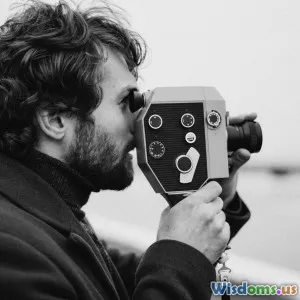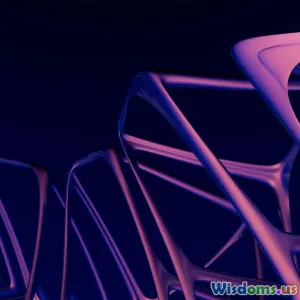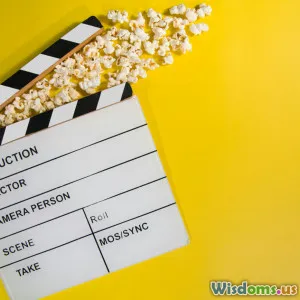
Do Audiences Prefer Raw or Polished Documentary Storytelling
9 min read Exploring audience preferences between raw and polished documentary storytelling styles. (0 Reviews)
Do Audiences Prefer Raw or Polished Documentary Storytelling?
Documentaries hold a unique place in the cinematic landscape, offering a window into reality, yet crafted through the lens of storytellers. But when it comes to documentary storytelling, an enduring question persists: do audiences gravitate more toward raw, unfiltered authenticity or polished, cinematic presentations? This article explores the dynamics of viewer preferences, supported by tangible examples, psychological insights, and industry perspectives, to illuminate which storytelling style resonates with modern audiences.
Introduction: Setting the Scene
Imagine sitting in a dark theater, the glow of the screen illuminating faces. A documentary begins—not with slick edits and sweeping music but with a seemingly improvised scene, raw emotions pouring through cracks in the frame. Or alternatively, it opens with beautifully composed shots, a carefully scored soundtrack, and a seamless narrative flow. Which style enthralls you more, and why?
The debate between raw and polished documentary storytelling is more than aesthetic—it influences how viewers connect, empathize, and ultimately perceive truth. Understanding this preference not only shapes filmmakers’ choices but impacts the documentary medium’s future.
Defining Raw vs. Polished Documentary Storytelling
What is Raw Storytelling?
Raw documentary storytelling focuses on unfiltered, unembellished presentation. It often uses handheld camerawork, natural lighting, minimalistic or real ambient sounds, and forgives imperfections or rough edges in favor of authenticity. Think of the vérité style:
- "Salesman" (1969) directed by the Maysles brothers captures intimate, unvarnished life moments with minimal editing intervention.
- Contemporary vlogs and social-issue documentaries that prioritize candid scenes and spontaneous interviews.
What is Polished Storytelling?
Polished documentaries employ structured narratives, cinematic cinematography, careful editing, background scoring, and sometimes re-enactments or voice-over narration to create a tight, visually appealing experience.
- For example, "Planet Earth II" (2016), known for its breathtaking cinematography and grand musical score.
- "Won't You Be My Neighbor?" (2018) balances archival footage with a carefully curated structure enhancing emotional impact.
Both styles have strengths, but understanding audience reception demands exploring psychological and social factors.
Audience Psychology: How Style Affects Viewer Engagement
Genuine Connections vs. Aesthetic Pleasure
Research in media psychology indicates that audience engagement relies on a mix of empathy and cognitive recognition. Raw storytelling often engenders trust because imperfections signal 'realness'—a concept studied under the “uncanny valley” effect, where near-perfect but artificial experiences can elicit unease.
- As philosopher Bill Nichols notes, documentary authenticity is linked to perceived truthfulness; rawness may facilitate this authenticity by honoring spontaneity.
Conversely, polished storytelling hooks through sensory appeal and narrative clarity, creating emotional arcs that captivate through relatable storytelling techniques long established in fiction:
- Structure, pacing, and professional sound design enhance immersion.
- Films like 13th by Ava DuVernay use polished storytelling to command viewer attention and provoke reflection with powerful music and editing.
Impact of Viewer Demographics
A 2019 Nielsen study suggested that younger viewers (Millennials and Gen Z) often favor raw, unmediated footage reminiscent of social media aesthetics, appreciating authenticity and imperfections as markers of truthfulness.
Meanwhile, older demographics may prefer polished documentaries, associating them with professionalism and quality, possibly due to traditional broadcast standards.
This suggests no singular preference exists, but instead a spectrum defined by expectations and cultural conditioning.
Case Studies: When Raw or Polished Work Best
The Power of Raw: Hoop Dreams (1994)
Hoop Dreams, capturing the lives of two Chicago boys aspiring to basketball careers, thrived on raw storytelling. The filmmakers accumulated over 250 hours of footage over five years, largely unrehearsed and candid. The grainy visuals, occasional shaky camerawork, and extended scenes lent profundity to nuanced social realities.
Audience reactions praised the film's sincerity, with The New York Times calling it “a cinematic equivalent of immersive journalism.” This raw adult narrative broke conventional parametric limits, forging strong emotional bonds.
The Effectiveness of Polished: March of the Penguins (2005)
Director Luc Jacquet’s polished documentary about emperor penguins combines extraordinary cinematography with an orchestral score and a compelling narration by Morgan Freeman. The controlled environment shot meticulously enhances viewers’ awe and emotional investment.
Its critical and box office success underscores the appeal polished documentaries can have, transporting audiences and providing an overwhelmingly immersive experience.
Hybrid Approach: The Cove (2009)
The Cove integrates gritty undercover footage with sleek editing and fast-paced music, combining raw investigative exposure with a polished final product designed to captivate and mobilize.
This hybrid style underscores that documentaries benefit from balancing authenticity with production values to maximize impact.
Industry Insights: Professionals Weigh In
Filmmaker Perspectives
Documentary filmmaker Errol Morris advocates for an approach he terms "controlled chaos"—ensuring that freedom and spontaneity (rawness) exist within an aesthetic framework supporting narrative coherence.
Similarly, Werner Herzog attests that "ecstatic truth" transcends purely literal accounts. For him, embellishment or polishing is sometimes essential to capture deeper human realities.
Platforms and Market Trends
Streaming giants like Netflix increasingly commission polished documentaries, capitalizing on high production value appeal to compete in saturated markets. Yet platforms like YouTube thrive on raw user-generated content, indicating coexistence in market strategies.
Surveys reflect mixed audience preferences influenced by platform context, genre, and purpose (informative vs. advocacy).
Implications for Documentary Makers and Audiences
For Filmmakers
Understanding audience segment preferences aids strategic decisions:
- Choose raw methods to foster trust and direct emotional connection, especially for social justice and vérité storytelling.
- Opt for polished styles to reach wider audiences, enhance memorability, and support grand narratives.
- Consider hybrid storytelling to capture immediacy while maintaining polish.
For Audiences
Viewers can cultivate media literacy by recognizing the strengths and limitations of each style. Appreciating raw storytelling helps identify authenticity, while enjoying polished films enables immersive educational experiences.
The Future of Documentary Storytelling
Emerging technologies, such as virtual reality documentaries, could redefine raw and polished boundaries, blending real-time experience with refined narrative crafting.
Conclusion: No One-Size-Fits-All Answer
The preference for raw or polished documentary storytelling is far from unanimous. It intertwines with demographics, cultural trends, media platforms, and subject matter.
Raw storytelling taps into the hunger for immediacy and genuine human connection, often engaging through unvarnished emotion. Polished storytelling captivates through cinematic techniques that elevate visuals and sound, enhancing narrative power.
Ultimately, the most resonant documentaries balance authenticity with craftsmanship, harnessing both raw and polished qualities to inform, inspire, and move audiences.
For those passionate about documentary filmmaking or viewership, recognizing this dynamic is key to both creating meaningful work and enriching the viewing experience.
In a media landscape flooded with content, the documentary’s soul often lies in its storytelling style—whether rough edges or refined lines, the story’s truth must shine through.
Rate the Post
User Reviews
Popular Posts


















